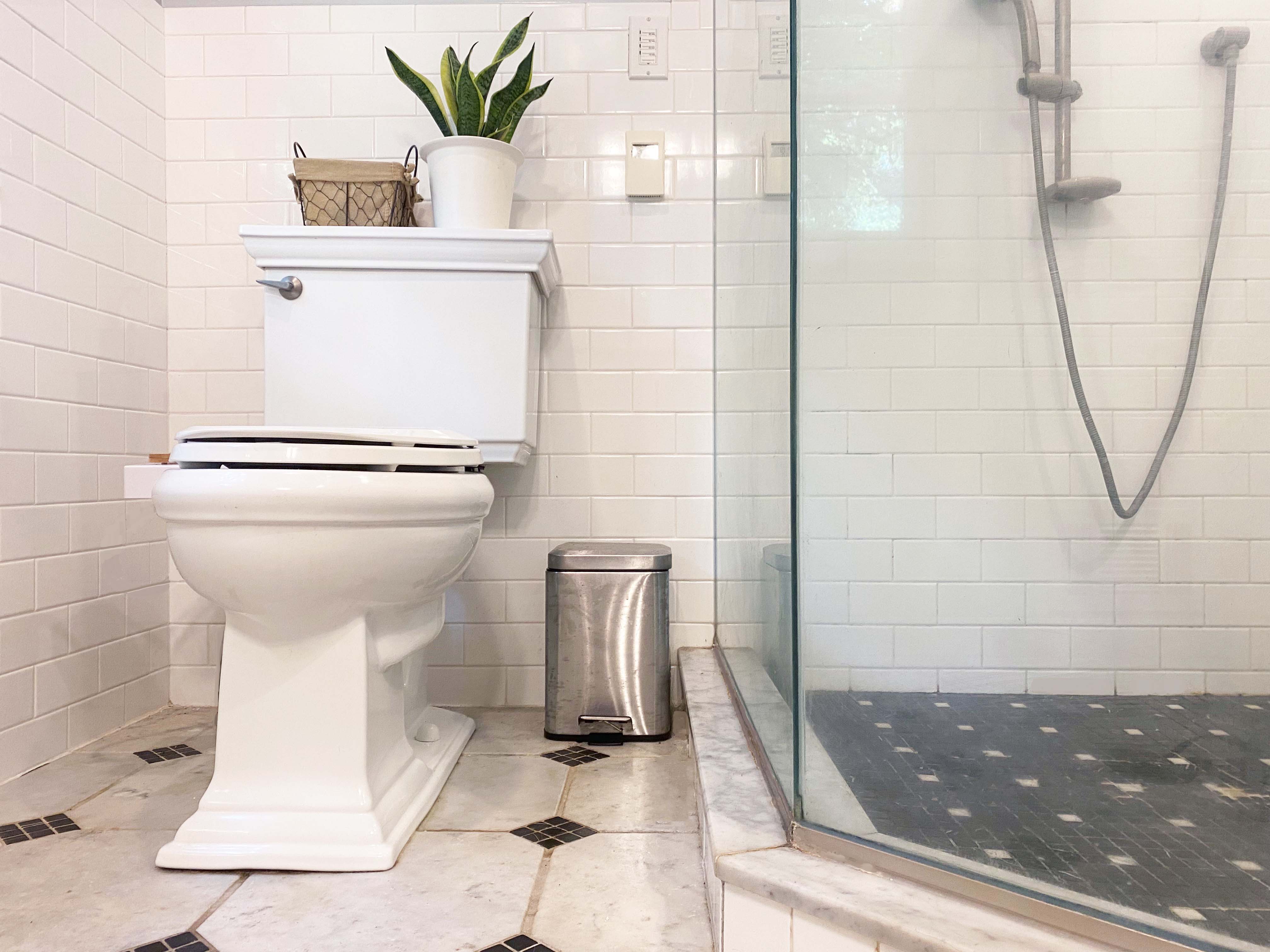
The Environmental Impact of Bathroom Cleaners
Week 30
Last week, we made some significant changes to our laundry routine after learning about its negative environmental impact. Now, we'll navigate through sustainable cleaning in the rest of the home. Get your latex gloves on, because next up, we're scrubbing toilets.
Why are bathroom cleaners a problem?
Air Pollution
Aerosols, cleansers, and disinfects are all sources of Volatile Organic Compounds (VOCs), which are emitted as gases and can cause high pollutant levels. According to the EPA, exposure to VOCs may cause health effects including:
- Eye, nose and throat irritation
- Headaches, loss of coordination and nausea
- Damage to liver, kidney and central nervous system
- Some organics can cause cancer in animals, some are suspected or known to cause cancer in humans.
Water Pollution
Many bathroom cleaners contain Hydrochloric Acid, also know as Muriatic Acid or Hydrogen Chloride. These cleaners are often washed down the drain and into our waterways. In water, Hydrogen Chloride dissociates to chloride and hydronium ions, which ultimately lowers the pH level and makes it more acidic.
According to NPR rising acid levels in the ocean can negatively affect aquatic life. For instance, coral reefs and shellfish can physically dissolve if acid levels get too high. Since coral reefs inhabit thousands of fish species, support local economies, and buffer shorelines from natural disasters, it is crucial that we keep them healthy.
Plastic Packaging
Bathroom cleaner bottles, like all plastics, are made from crude oil, a non-renewable resource, which is harmful for two reasons: manufacturing generates significant pollution and the product is not biodegradable. As Sciencing.com put it, "they are difficult to produce and nearly impossible to get rid of once produced". Instead of biodegrading, plastic breaks down into tiny micro-plastics that litter our soil, our waterways, and even our air.
Are bathroom cleaner bottles recyclable?
Most cleaning bottles are made of #1 or #2 plastics and are curbside recyclable once emptied. Remember that the recycling symbol on a product does not mean it is recyclable, that number only indicates what material was used. Check your local requirements to make sure you know which plastics are and are not accepted for pickup. Metal cans, like the ones used by Scrubbing Bubbles, are also recyclable, but again, must be empty. Paperboard conainers, like Comet, can be recycled if the paperboard is separated from the metal.
How can I be more sustainable when I clean the bathroom?
When it's time to replace your bathroom cleaners, opt for a sustainable cleaner. You can even make your own toilet bombs like I did! If you're in the market for new cleaning tools, pick sponges and brushes made from environmentally friendly materials instead of plastic, like this wooden toilet brush from Package Free Shop or these loofah scrubbers from Zero Waste Store.